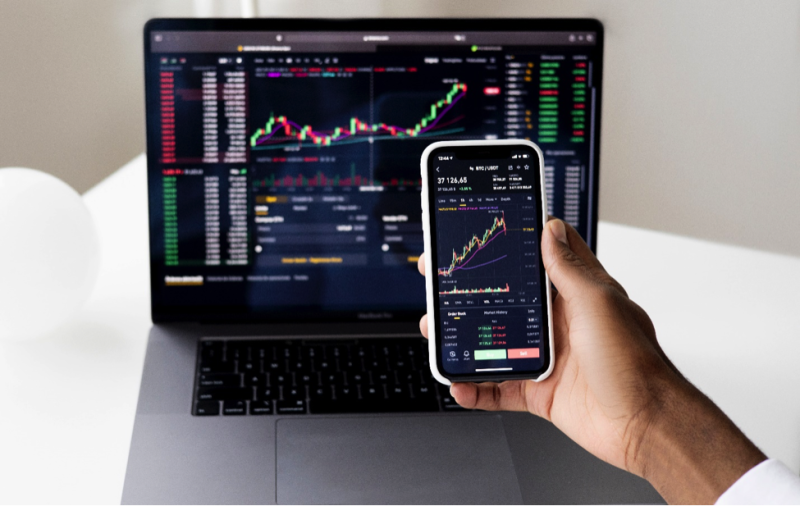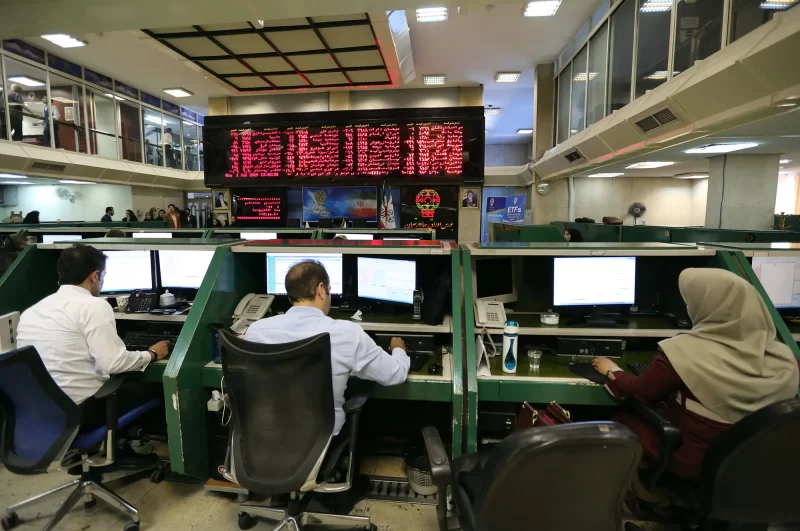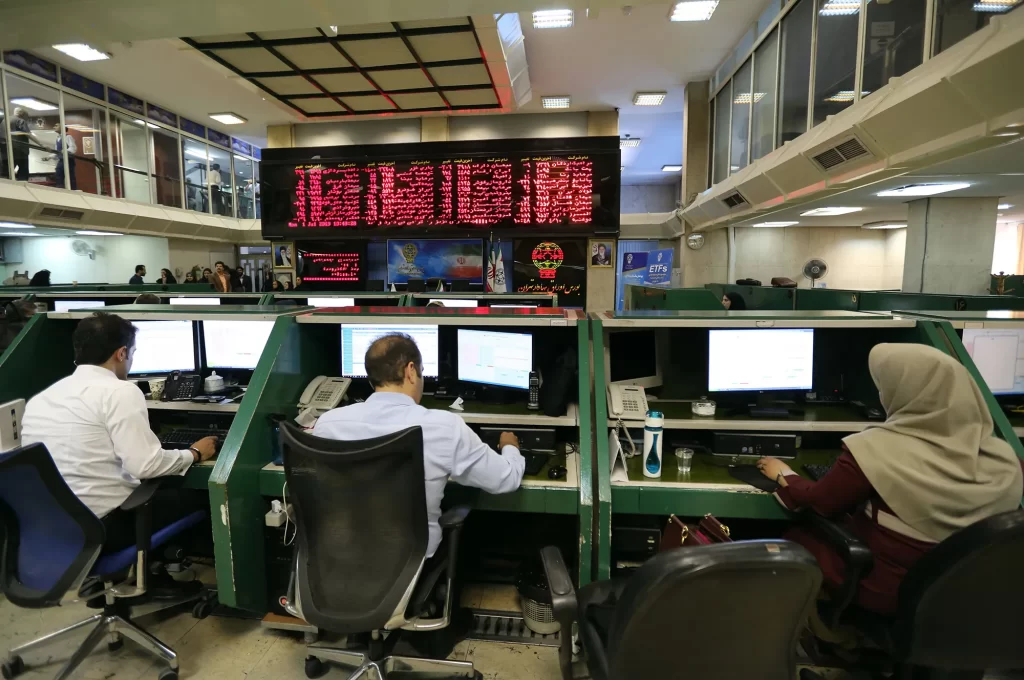Managing risk is a crucial part of the financial markets, regardless of whether you are involved in foreign exchange trading or stock trading. It can be the difference between your success or failure as a trader. There are various methods you can use for risk management. One of these methods is to diversify or spread your capital investment over multiple trades. Basket trading happens to be one of the best methods you could use to diversify.
In this article, we will take you through what basket trading is and how to basket trade. Additionally, we have included some benefits of basket trading.

Also Read: Risk Reward Ratio Ultimate Guide
Contents
- Basket Trading Explained
- How Does Basket Trading Work?
- Basket Trading: Forex
- Basket Trading: Stocks
- Basket Trading: Commodities
- Advantages of Basket Trading
- Final Thoughts
- FAQs
Basket Trading Explained
Basket trading is a trading strategy that allows traders to buy or sell several financial instruments in a single basket order rather than trading on individual securities (financial instruments). These financial instruments can either be related or unrelated. These financial instruments could be anything from currencies, commodities, options, or stocks.

The goal of basket trading is to make sure that at the end of each trade the total sum of profits outweighs the total sum of losses i.e., the outcome of each order should be positive. Due to the nature of financial markets, this outcome is possible as different financial instruments in trading baskets usually cancel out each other's profits and losses.
It is mostly designed as a capital management strategy. For this reason, it is commonly used by institutional investors, investment funds, and hedge funds. However, it is slowly gaining popularity among retail traders. This is largely driven by the fact that brokers today, require a lower minimum investment amount compared to before.
While the basket trading strategy can be used in various financial markets, it is most popular in the forex market and the stock market.
How Does Basket Trading Work?
As mentioned above, basket trading involves trading multiple securities such as currency pairs, stocks, or commodities in one basket. There are several ways through which investors group or decide on what currency pairs to trade in a specific currency basket. However, in the case of stocks and index funds, this can be custom or automated depending on the specific index or a trader’s choice.
Basket Trading: Forex

In the foreign exchange context, a basket contains several currency pairs. Usually, investors scout the forex market for a currency pair that has a distinguishable bearish or bullish trend. Based on this currency pair, they then choose other currencies to trade in the ‘basket’. The base currency pair serves as the main currency for speculation and analysis. The chosen currencies in this case have to be related to the base currency pair.
To illustrate, assume the investor scouts the market and decides to use GBP/USD as his base currency pair. He notices that the market is showing a clear downtrend (bearish). This would mean that the US dollar is strengthening compared to the Pound Sterling. The investor may then choose to trade several other USD pairs based on this speculation. He expects other markets with the USD to behave similarly. This helps spread his capital and therefore manage risk.

Alternatively, you can buy ETFs while trading multiple currency pairs in the foreign exchange market. A good example would be the Invesco DB U.S. Dollar Index Bullish Fund ETF. With the US Dollar as the base currency, this ETF fund tracks the prices of the Euro, Japanese yen, British Pound, Canadian dollar, Swedish krona, and Swiss franc. There are other ETFs that work in the same nature as the dollar Index.
Also Read: Best Forex Pairs To Trade
Basket Trading: Stocks
Due to the volatile nature of the stock market, the basket trading strategy is one of the most preferred strategies while trading several stocks. Investors can either choose to use specific sector ETFs or create trade baskets that are unique to them based on their technical analysis.

To illustrate, assume an investor wanted to trade on in the healthcare industry as he speculates that the market will take a specific direction. This could be influenced by the introduction of a new drug or different tax implications. The investor may choose several stocks that may benefit from this and trade them as a basket as opposed to him deciding to place multiple trades in the sector.
Investors may also choose set stock ETFs which are mostly set against a specific benchmark bond. Mostly these ETFs contain 15 different stocks or more. As with custom baskets, the stocks in an ETF are must meet specific requirements. These requirements could be factors such as market capitalization, fractional shares, prices, etc.
In the basket, they are then weighted differently in proportion to their value. Since stock prices are volatile, the share weighting also changes in proportion to their prices.
Basket weighting refers to the distribution of funds within the basket while considering factors such as shares value, stock percentages, and dollar amounts. Dollar weighting and percentage weighting involve allocating a certain amount of funds to specific positions in the basket with regards to the total basket value. These weightings can either be allocated equally or proportionally depending on an investor’s technical analysis of various asset classes. Share weighting involves allocating shares equally to unique positions in the stock basket.
Basket Trading: Commodities

Similarly, traders can use the basket trading strategy while trading commodities against an underlying index. A good example of a commodity watch is purchasing the NYSE USO Oil ETF , which tracks the price of petroleum products, the NYSE CORN ETF, and the NYSE GLD ETF. You can use these ETFs to create a basket. In this case, you would use various weightings to purchase or sell these ETFs.
Advantages of Basket Trading
From the above outline, you can tell that the basket trading strategy is unique while compared to other trading strategies. The following are some benefits of trading using currency, stock, or commodity baskets.
1. Time-saving
Basket trading saves is very time efficient as you track the market movement of the basket as a single entity as compared with following and analyzing all the securities in the basket individually. It is also time-saving in that you can open several positions across various sectors using just a single order. It is even possible to program trades to automatically open and close positions while using the basket trading strategy.
2. Investment Control
Basket trading allows you to control and decide what amounts of capital to allocate to multiple securities within the basket. You can always add or remove several securities from a basket at any point during the trade.
It also helps in mitigating an investor's risk. This is mainly because the financial instruments in a basket cancel each other out, therefore, cushioning the investor against market volatility.
3. Personalized trading
In the case that you choose to trade using a custom basket, you can select different currencies, stocks, and/or commodities at choice. This is convenient, and it enhances your chances of profitability especially if you are good at analyzing the markets. This is very beneficial, especially for experienced stock traders. They can select the stocks that, based on their market analysis have a high ROI.
Personalized trading also allows traders to participate in the market sectors they are most familiar with. For example, if you are familiar and up-to-date with stocks in the healthcare industry, you can choose to focus solely on that. This gives you a better chance of success as a trader.
4. Convenient Capital Allocation
Through the different weighting methods, investors can allocate different amounts to different securities in a basket conveniently and seamlessly. This would not be possible in the case if they were to trade the securities individually. It gives an edge to basket traders in that they do not need to carry out a lot of calculations especially while using dollar weighting and percentage weighting.
Final Thoughts
In the past due to the high capital requirements by most brokers, basket trading was a reserve for mutual funds, hedge fund managers, institutional investors, and a few wealthy retail traders. However, due to today's progressive trading technologies, basket trading is available to average program traders who do not necessarily have funds in large volumes.
Based on your investment objectives you could either choose to use your entire investment in a single watch basket or to use multiple basket transactions. The key takeaway is that basket trades offer a more convenient way of trading a number of securities at once in contrast to trading on individual securities with the goal of both trades being to protect your initial investment.
Kindly note that this article is not intended as investment advice in any way. However, based on the past performance of the basket trade strategy, it is definitely worth your time and attention.
FAQs
What are the requirements for basket trading?
To use the basket trading strategy all you need is a broker who offers basket trading services. Most brokers offer this service with no additional fees other than the normal transaction fees while trading. A sufficient amount of know-how and capital is also required, depending on how the brokers' program works.
Is basket trading profitable?
Yes, basket trading if handled correctly is a sound strategy that will enable you to spread your risk to make more profits than losses.















